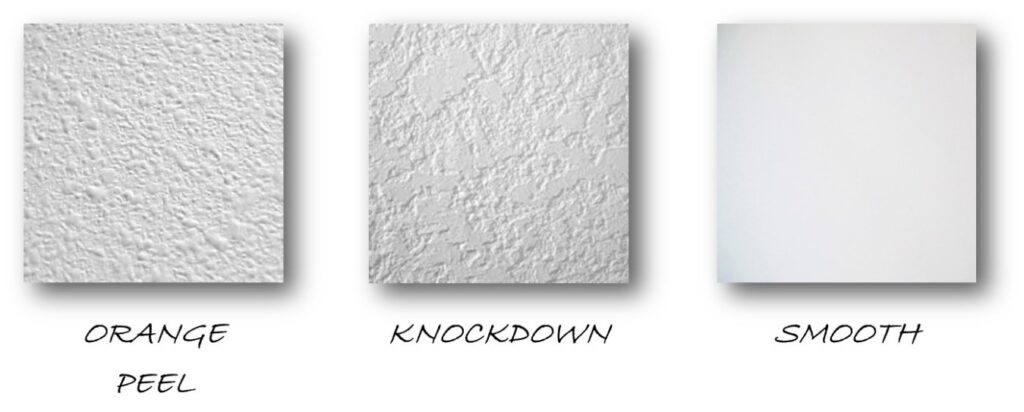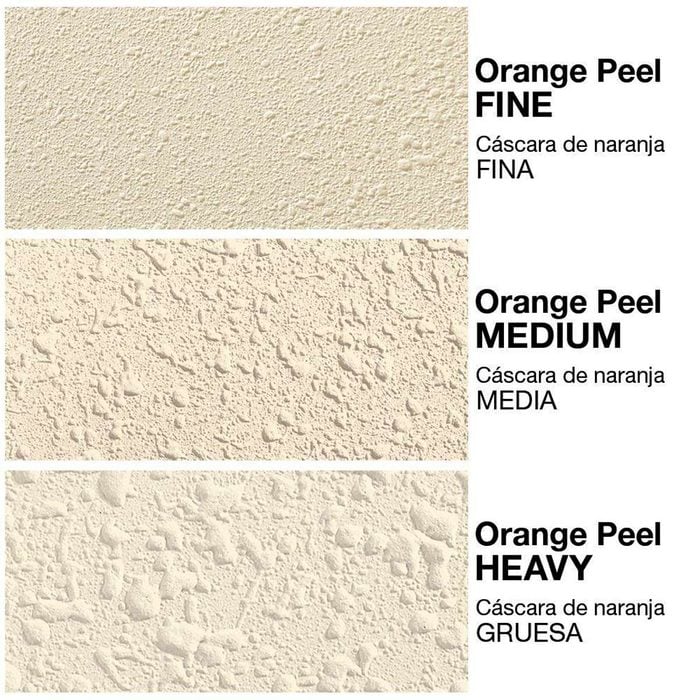Drywall Texture Choices Explained
Drywall texture is applied to the wall via a spray gun or a hand trowel, depending on the desired end result. The spray gun is used for lighter texture and the hand trowel for the heavier textures. Let’s take a look at the two most popular wall textures that are the standard textures at Harpe Development LLC and the Level 5 upgraded smooth wall texture.

Orange Peel (Standard)
Like the name suggests, this texture resembles the skin of an orange and is the most common texture found in residential construction. Orange peel comes in several variations: light, medium & heavy and is applied by a spray gun.
Pros
Orange peel is an ideal way to hide any imperfections on your walls. This finish will blend nicely with almost any décor. Other advantages include the fact that orange peel is very easy to DIY and requires little time to do. It’s also inexpensive and easier to clean than the knockdown finish.
Cons
On the other hand, orange peel wall textures are hard to match, meaning that the final outcome will depend on lots of different factors like the consistency of the mud, ambient temperature, humidity levels, and air pressure. This makes it hard to retouch an area or create an orange peel texture on an adjacent wall later since the factors will change, and as a result, so will the outcome.

Knock Down (Standard)
This texture is also applied with a spray gun and similar to orange peel, comes in three variations, light, medium & heavy. The difference is that once applied to the wall, the technician will skim the wall with a drywall knife that will flatten out the texture drops making a more smooth but variegated finish.

Level 5 (Smooth Wall *PREMIUM*)
Most folks know Level 5 as a smooth texture. Sometimes referred to as a gallery finish. Level 5 refers to the different steps to achieve the process. Level 0 being hung drywall, level 1 is having the joints taped & bedded with Mud, level 2 is having your corner beads installed and all the excess mud removed from taped joints and corner beads. Level 3 is the first coat of mud on the wall and sanded smooth. Level 4 is considered a finish coat. This is is a 2nd full layer of mud on the walls and sanded smooth. This level, when done correctly will work for most applications where a smooth finish is desired. Level 5 is an additional coat of mud sanded smooth and is only necessary when the walls will have a harsh light illuminating them.
Level 5, of course, is the most expensive due to all the extra hand-troweled labor. Light orange peel is still popular because it achieves coverage and it takes less labor.
